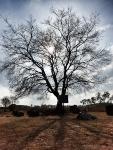Plain of Jars - Post your favourite pictures here
- Thread starter brian_bkk
- Start date
You are using an out of date browser. It may not display this or other websites correctly.
You should upgrade or use an alternative browser.
You should upgrade or use an alternative browser.
Some info from the Xieng Khouang tourist office
If anyone has any pix from any of the sites please post them.Of the 90+ identified jar sites. jar junkies can investigate seven, from large clusters near Phonsavan to less visited Ban Songhak along the Nam Ngum river in the province's north east.
Experts have been trying to unravel the mystery behind the mysterious Plain of Jars since French Geologist Madeleine Colani uncovered one in a cave in 1930. Nearby, she dug up coloured glass beads, burnt teeth, and bone fragments, which spawned the Iron Age crematorium theory.
The jars waited for more than 60 years, during which they weathered a decade of bombing, before Japanese Professor Eji Nitta and Lao archaeologist, Thongsa Sayavongkhamdy, mapped Sit 1 near Phonsavan in 1994. Their find also unveiled surrounding graves as old as the jars, prompting Professor Nitta to consider the urns as monuments to the dead.
Mr Sayavongkhamdy returned with Australian Peter Bellwood, and the reckoned the jars date to the late first or early second millennium BC, and were cremation vessels of family heads circled by lineage.
In surveys from 2004-2005 and again in 2007, UNESCO archaeologist Julie Van Den Bergh, added a twist to earlier theories: possibly people used the jars to "distil" bodies and finally cremate them. Lao legend holds that giants brewed rice wine in the jars, while practical locals believe early traders crisscrossing Xieng Khouang collected rain water for drinking in the jars.
Those are the current choices. Take your pick.
20th November 2013, with the Lao Ducati guys.
At Site 2




Site 2 is the best site the guys say, or at least better than Site 1.
Now who's going to check out Site 7?
At Site 2
Site 2 is the best site the guys say, or at least better than Site 1.
Now who's going to check out Site 7?
Last edited by a moderator:
10th June 2016
Site One




If you want to know more about the Jars check out these GTR Threads
An Easy Road to Laos - 3 Plain of Jars
Phu Keng Jar Quarry site, also known as Keng Mountain. Phonsavan Jars with steps.
Site One
If you want to know more about the Jars check out these GTR Threads
An Easy Road to Laos - 3 Plain of Jars
Phu Keng Jar Quarry site, also known as Keng Mountain. Phonsavan Jars with steps.
Last edited:

Regrettably I only visited site 1..but hope to visit the area again in future to explore more of the province and take in sites 2 and 3.






